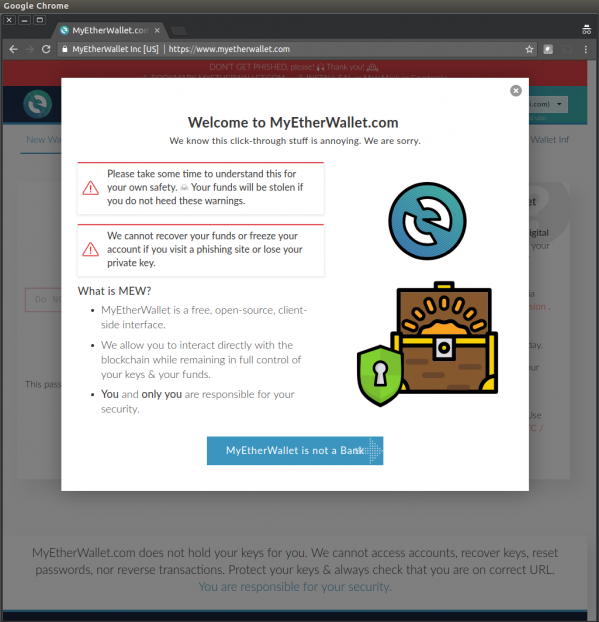If the Internet is, as is often said, held together with elastic bands and pieces of Sellotape, BGP is essentially a bunch of post-it notes that serve as traffic signs.
BGP hijacks – in which a malicious attacker essentially takes over one or more ranges of IP addresses – are not extremely common, but for a protocol that is so essential to the Internet’s functioning, they occur worryingly often. In 2014, a
BGP hijack
resulted in $83k of freshly mined Bitcoins being stolen. In a VB2016
conference presentation
, Mike Benjamin of
Level 3 Communications
talked about the various issues that exist with the protocol.
Yesterday, a
BGP hijack
resulted in five IP ranges that belonged to
Amazon
‘s infrastructure being ‘stolen’ for about two hours and being routed to a network controlled by attackers. This gave the attackers control of
Amazon
‘s DNS responses, which they used in order to point the DNS of
MyEtherWallet
, a web-based wallet for the Ether cryptocurrency, to a server hosted in Russia.
DNS hijacks aren’t a new phenomenon; in December, security firm
Fox-IT
published details
of how a DNS hijack had been used against its systems. In that instance, the attackers used the control they had gained over DNS to generate a valid certificate for the domain. Those targeting
MyEtherWallet
didn’t bother with that, nevertheless it appears that several people clicked through the certificate warning to visit a phishing version of
MyEtherWallet
‘s website, resulting in some $150k worth of digital currency being stolen.

The issues with BGP and DNS are an Internet-wide problem that can’t be solved by an individual website or service, but there are some ways to mitigate the risks, which for high-risk services are worth considering.
The general usefulness of
DNSSEC
, which checks the digital signature of DNS responses, is debatable, but in this case it could have prevented the DNS takeover through a BGP hijack.
HTTP Strict Transport Security
(HSTS), which forces a previously seen connection always to use HTTPS, would have prevented the end-user from being able to ignore the certificate warning.
Maybe none of this really matters, though. There has been some speculation that the
MyEtherWallet
phishing could have been a smokescreen for another, more advanced attack. A number of people have pointed out that it is quite odd that the wallet to which the stolen funds were transferred already contained $17m worth of cryptocurrency.
Leave a Reply